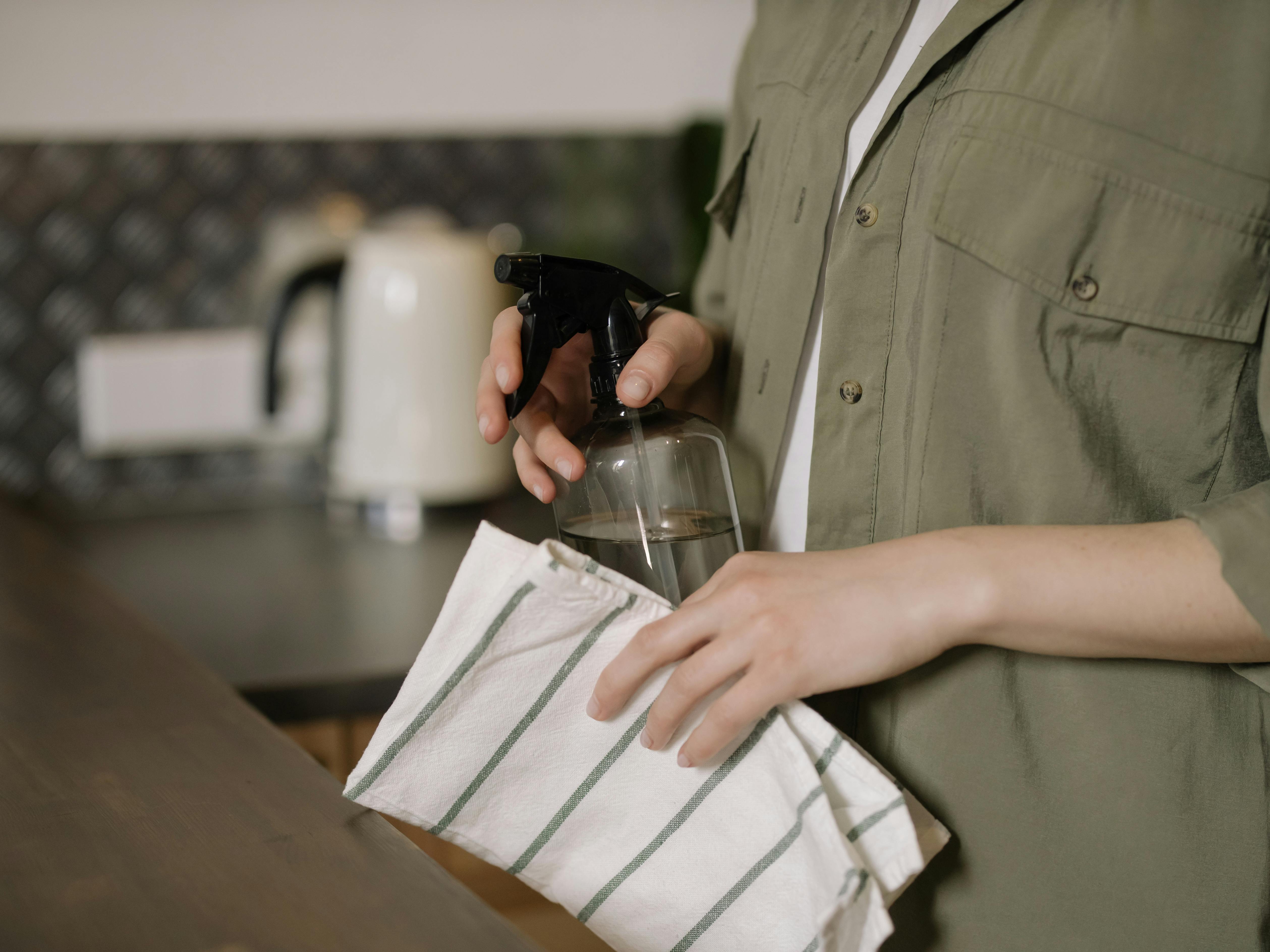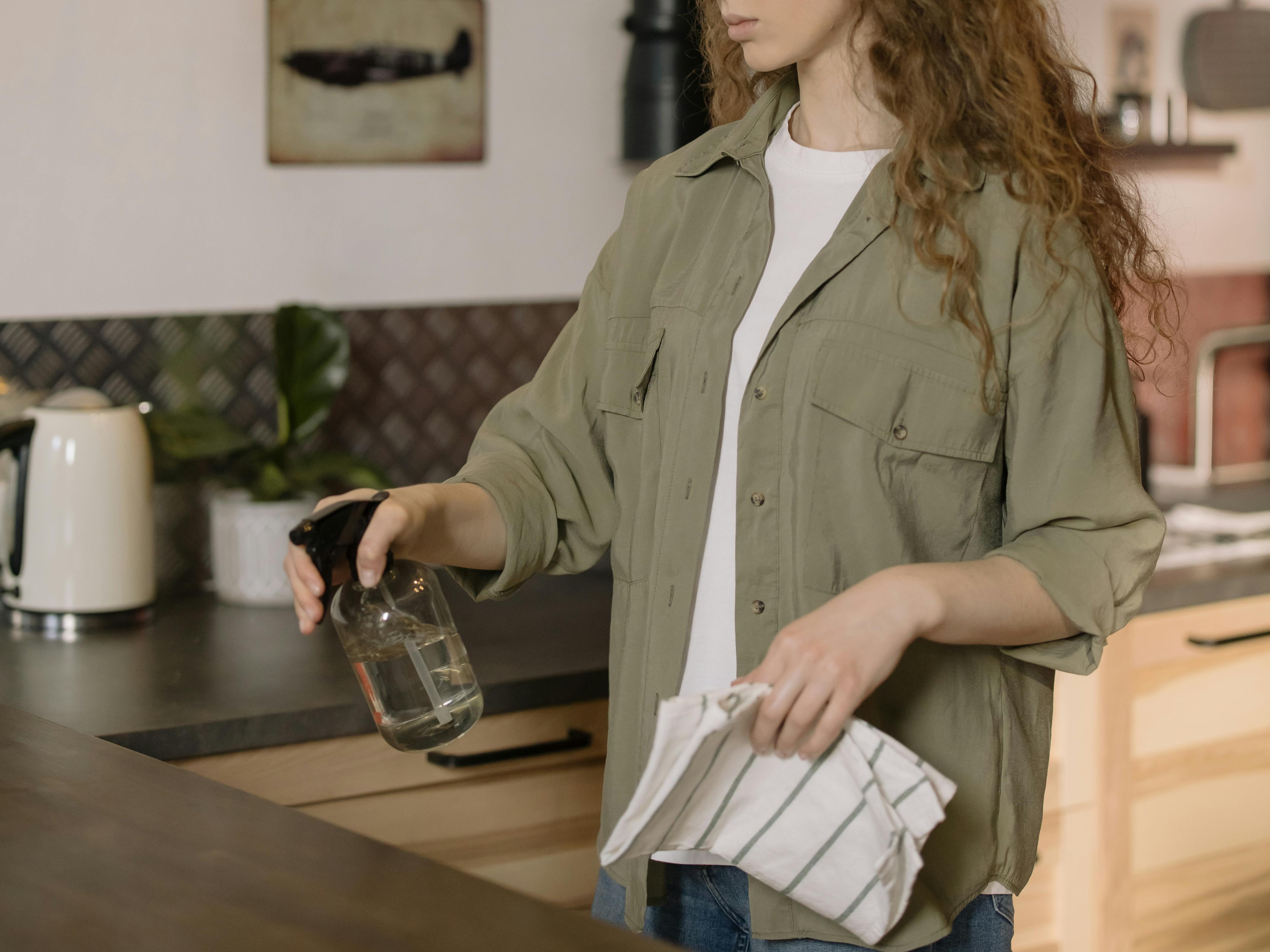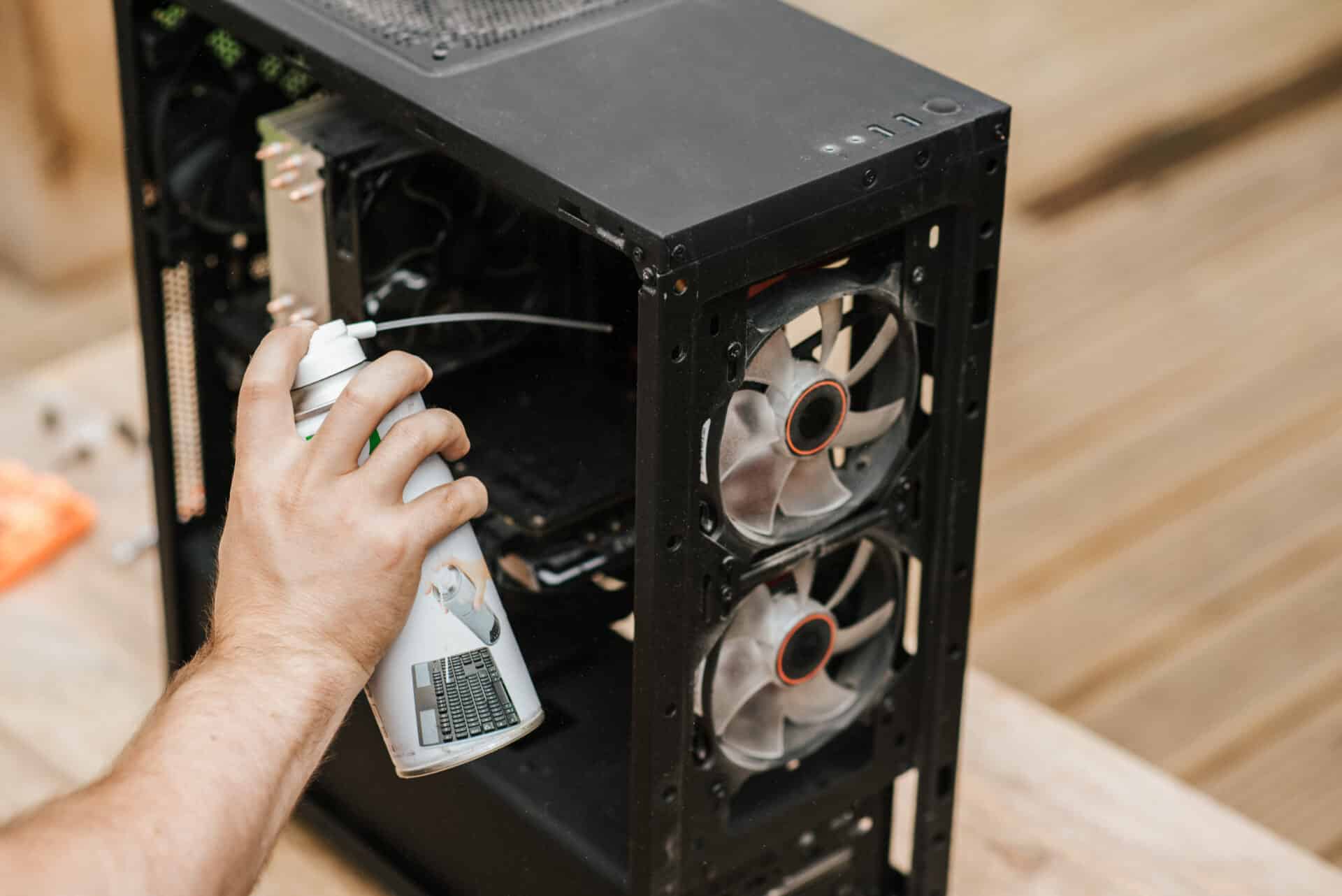Using distilled vinegar for cleaning is a great way to clean your home without using harsh chemicals. Distilled vinegar is a natural and non-toxic cleaning solution that can be used to clean a variety of surfaces, from kitchen counters to bathroom sinks. It is also much less expensive than other types of cleaners and can be used to tackle tough stains and odors. In this article, we will look at how distilled vinegar can be used for cleaning and the benefits it offers.Distilled vinegar is a type of vinegar that has been further processed to remove impurities. This type of vinegar is made by fermenting distilled alcohol and then adding acetic acid bacteria. The resulting product is a clear, acidic liquid with a strong vinegar smell and taste. Distilled vinegar is commonly used for cooking, cleaning, and other household purposes.
The Benefits of Using Distilled Vinegar for Cleaning
Distilled vinegar is a natural, non-toxic and affordable cleaning product. It can be used for a variety of household tasks, such as cleaning windows, removing stains from carpets and upholstery, and even removing odors from fabrics. Vinegar has been used for centuries as an effective cleaning solution due to its acidic properties. Here are some of the key benefits of using distilled vinegar for cleaning:
Non-Toxic
Distilled vinegar is a safe and non-toxic cleaner that does not contain any harsh chemicals or abrasive chemicals like some other commercial cleaners do. This makes it an ideal choice for households with children or pets, as it won’t cause any harm if ingested in small amounts.
Inexpensive
Distilled vinegar is very affordable and can be purchased in large quantities at most major stores or online. It’s much cheaper than many commercial cleaners, which can be expensive when you consider that they often need to be purchased multiple times throughout the year.
Multi-Purpose
Distilled vinegar has many uses around the house and can be used for almost any type of cleaning job you may have. From removing limescale from bathroom fixtures to cutting through grease on kitchen surfaces, distilled vinegar is an incredibly versatile cleaner that should never be overlooked!
Effective Cleaner
Vinegar has been used as a cleaner for centuries due to its acidic properties which help cut through dirt and grime quickly and easily. It’s also effective at killing bacteria, making it an ideal choice for cleaning surfaces that come into contact with food or other items susceptible to bacteria growth.
Potential Risks of Using Distilled Vinegar for Cleaning
Using distilled vinegar for cleaning can present a few potential risks. Vinegar is a very acidic substance and can be corrosive to some surfaces. In particular, it should not be used on stone surfaces such as marble or granite, as it can etch the surface. It also should not be used on aluminum or cast iron, as it can cause discoloration and damage. When used on surfaces that are not properly sealed, vinegar may also cause staining.
In addition to the potential for damage, using vinegar for cleaning can also produce strong odors that may linger in the air for some time after use. This odor can be difficult to remove from fabrics and other porous materials. For this reason, it is important to use distilled vinegar with caution in enclosed spaces such as bathrooms and kitchens.
Finally, when using distilled vinegar for cleaning, it is important to understand that it will not kill all bacteria and viruses. While it is effective against many types of bacteria and fungi, it is not effective against all microorganisms. In particular, it will not kill spores or viruses such as the flu virus or HIV virus. For this reason, when using distilled vinegar for cleaning purposes, it should always be followed up with a cleaner that contains an antimicrobial agent such as bleach or hydrogen peroxide.
Using Distilled Vinegar for Cleaning
Distilled vinegar is a great natural cleaning agent and can be used for a variety of cleaning tasks. It is a non-toxic, eco-friendly alternative to harsh chemicals, making it ideal for those looking to keep their home free of dangerous toxins. Distilled vinegar has many disinfectant properties that make it effective in killing off bacteria, mold, and other germs. Additionally, its acidic nature makes it effective in removing built-up dirt, soap scum, and hard water deposits. Here are some tips on how to use distilled vinegar for cleaning:
Dilute with Water
When using distilled vinegar for cleaning purposes, diluting it with equal parts water is the recommended approach. This will help reduce the acidity of the vinegar and make it safe to use on surfaces such as tile or hardwood flooring without damaging them. Additionally, when diluted with water the vinegar can be used as an all-purpose cleaner on countertops and other surfaces.
Add Essential Oils
Adding essential oils to distilled vinegar can help enhance its cleaning power and give it a pleasant scent. A few drops of your favorite essential oil can help mask the smell of the vinegar while also providing additional disinfectant properties. Lavender oil or tea tree oil are two popular options that have been known to have strong antibacterial properties.
Apply Directly
In some cases, using distilled vinegar undiluted may be required depending on the task at hand. For instance, if you need to remove rust or hard water deposits from fixtures or appliances then undiluted distilled vinegar may be needed. In these cases, simply apply directly onto the surface and let sit for several minutes before wiping away.
Test Surfaces First
It’s important to test surfaces beforehand when using distilled vinegar for cleaning purposes as some materials may not react well with the acidity of the liquid. To avoid any potential damage always apply a small amount of diluted vinegar onto an inconspicuous area first before proceeding with any larger scale applications.
Using distilled vinegar is an excellent way to clean your home without exposing you or your family to harsh chemicals found in traditional cleaners. When used correctly it can be just as effective as store-bought cleaners while being more eco-friendly and cost effective too!
Preparing a Distilled Vinegar Cleaning Solution
Distilled vinegar is a great natural cleaning solution for many surfaces and materials. It is an effective way to remove dirt, grease, grime and bacteria without the use of harsh chemicals. Preparing a distilled vinegar cleaning solution is easy and can be done in just a few simple steps.
The first step in preparing the distilled vinegar cleaning solution is to gather the necessary supplies. You will need distilled white vinegar, warm water, a spray bottle, and a soft cloth or sponge.
Once you have your supplies ready, begin by filling the spray bottle with equal parts of warm water and distilled white vinegar. Shake the bottle gently to ensure that the mixture is blended well together.
Next, wet the soft cloth or sponge with the distilled vinegar solution and use it to wipe down surfaces that need to be cleaned. Allow the solution to sit on surfaces for 1-2 minutes before wiping away with a damp cloth or paper towel.
When finished using the cleaning solution, it can be stored in a cool dark place for up to four weeks. To ensure that it remains effective over time, be sure to shake it well before each use.
Using distilled white vinegar as an all-purpose cleaner is an effective and safe way to keep your home clean without having to use harsh chemicals. By following these simple steps you can easily prepare your own distilled vinegar cleaning solution for all of your household needs!

Where to Use Distilled Vinegar for Cleaning?
Distilled vinegar is an effective cleaning product, and can be used in a variety of ways. It is a versatile and cost-effective way to clean many surfaces around the home. It is also a natural, non-toxic alternative to many harsh chemical cleaners. Some of the best places to use distilled vinegar for cleaning include windows, countertops, sinks, toilets, showers, and floors.
For windows and mirrors, mix one part distilled vinegar with four parts water in a spray bottle. Spray the solution on the surface and wipe it off with a clean microfiber cloth or newspaper for streak-free results. This mixture is also useful for removing soap scum from glass shower doors.
Distilled vinegar can also be used on countertops and other hard surfaces such as tile or stainless steel. Mix equal parts distilled vinegar and water in a spray bottle and spray it onto the surface. Wipe it off with a clean cloth or sponge. This mixture will remove dirt, grease, and grime without leaving behind any streaks or residue.
Distilled vinegar can also be used to clean sinks and toilets. Simply pour one cup of distilled vinegar into the bowl of the toilet or sink and let it sit overnight before scrubbing with a toilet brush or sponge. The acidic properties of the vinegar will help break down tough stains such as rust or mineral deposits that have accumulated over time.
Finally, distilled vinegar can be used on floors as well. Mix one cup of white distilled vinegar in one gallon of warm water; use this solution to mop your tile or hardwood floors for a thorough clean without any harsh chemicals or residue left behind. This is an excellent way to deep clean your floors while still being eco-friendly!
What Surfaces Not to Use Distilled Vinegar For Cleaning?
Distilled vinegar is a natural cleaning agent that is effective on many surfaces, but there are some surfaces that should not be cleaned with distilled vinegar. It is important to understand what these surfaces are so as to avoid causing damage while cleaning.
Distilled vinegar should not be used on hardwood floors, natural stones or marble surfaces. Its acidic nature can strip away the finish and cause permanent damage, making these hard surfaces look dull and worn.
It is also not recommended to use distilled vinegar on waxed furniture or other waxed surfaces since it will dissolve the wax and ruin the finish. The same goes for sealed or polished metals like brass and copper; the acidity of the vinegar can eat away at the sealant, leaving them exposed to further damage from moisture and dirt.
In addition, it is best to avoid using distilled vinegar on electronics such as computers, tablets, and phones since its acidic nature can cause corrosion of delicate components. Anything with an electrical component should be wiped down with a damp cloth instead of using vinegar.
Lastly, it is important not to use distilled vinegar on any type of painted surface as it could potentially strip away the paint or discolor it due to its acidity. This could lead to costly repairs in order to restore the surface back to its original condition.
In conclusion, there are certain surfaces that should not be cleaned with distilled vinegar due to its acidic nature which can cause permanent damage such as stripping away finishes or discoloring painted surfaces. It is important to keep this in mind when selecting a cleaning agent for your home so as to avoid any costly repairs or damages down the line.
Removing Excess Distilled Vinegar From a Surface After Cleaning
Cleaning surfaces with distilled vinegar is an effective and affordable way to keep them looking their best. However, if you use too much vinegar, it can leave behind a residue that can be difficult to remove. Fortunately, there are several ways to easily and safely remove excess distilled vinegar from your surfaces without damaging them.
The first step is to rinse the surface with warm water. This will help to dilute any excess vinegar that is on the surface and make it easier to clean off. It’s important to use only warm water as hot water can cause damage to some surfaces.
Once the surface has been rinsed with warm water, you can use a soft cloth or sponge and some mild detergent or dish soap to scrub away any remaining residue. Be sure to rinse the cloth or sponge often as you scrub so that you don’t spread around any of the vinegar residue. You may need to repeat this process several times depending on how much vinegar was used in your cleaning solution.
If there is still some residue left behind after scrubbing, you can try using baking soda mixed with a bit of warm water. Baking soda is a mild abrasive that can help break down stubborn stains and residues without damaging your surfaces. Once the paste has been applied, let it sit for a few minutes before wiping it away with a damp cloth or sponge.
You can also use white distilled vinegar diluted with an equal amount of warm water as a final cleaning solution for removing any remaining traces of distilled vinegar from your surfaces after cleaning. Simply apply the mixture on the affected area and let it sit for several minutes before wiping away with a soft cloth or sponge.
By following these simple steps, you should be able to easily and safely remove any excess distilled vinegar from your surfaces after cleaning without damaging them in the process.

Conclusion
Distilled vinegar can be used for cleaning, but it should be used with caution. The acid in the vinegar could cause damage to some materials if not used properly. It is best to use distilled vinegar on surfaces that are not easily damaged and to use it with a diluted solution. The natural cleaning power of vinegar is a great way to clean without using harsh chemicals, but always test a small area first before using it on a larger area. With proper care, distilled vinegar can be an effective cleaner for your home.
At the end of the day, the choice of whether to use distilled vinegar for cleaning is up to you. It is important to consider all of the pros and cons before making your decision and take into account any potential risks associated with its use.

